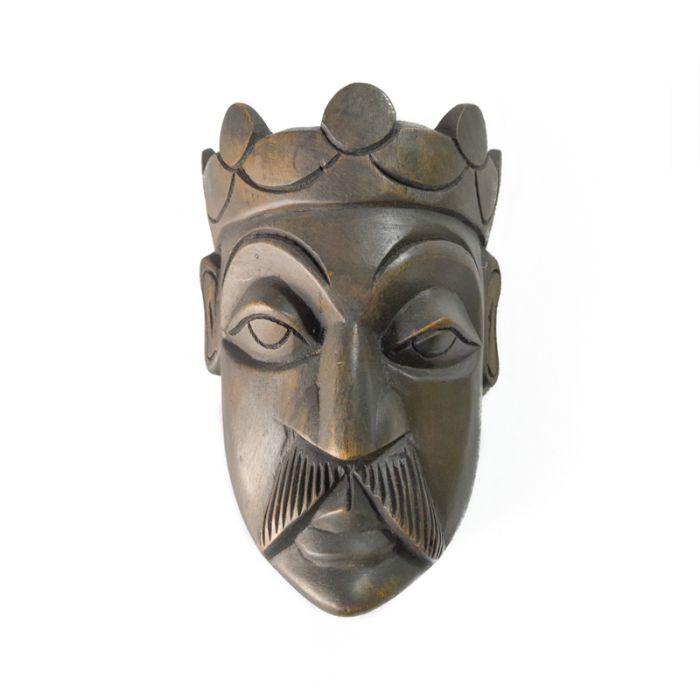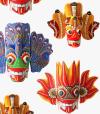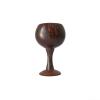Exploring the World of Wooden Masks: A Timeless Art Form

Introduction
Wooden masks have captivated cultures around the globe for centuries, serving as powerful symbols of tradition, spirituality, and artistry. From Africa to Asia and the Americas, these masks carry deep meanings and rich histories. In this blog, we’ll delve into the fascinating world of wooden masks, exploring their significance, craftsmanship, and the diverse styles that exist across different cultures.
The Cultural Significance of Wooden Masks
Wooden masks are not just decorative items; they are imbued with cultural narratives and spiritual beliefs. Different cultures use masks for various purposes, including:
Rituals and Ceremonies
Many indigenous communities use wooden masks in religious ceremonies and rites of passage. They are believed to embody spirits, ancestors, or deities, serving as intermediaries between the physical and spiritual worlds.
Theatrical Performances
In many cultures, masks are integral to traditional dances and theatrical performances. They transform the wearers into characters, allowing them to convey stories, emotions, and moral lessons through movement and expression.
Cultural Identity
Masks often reflect the identity of a community, showcasing unique designs, colors, and symbols that represent local heritage, values, and beliefs. They serve as a way for communities to preserve their history and pass it on to future generations.
Craftsmanship: The Art of Mask Making
The creation of wooden masks is a meticulous and skillful process. Artisans often start with a single block of wood, selecting durable materials like mahogany, cedar, or teak. The steps involved include:
Carving
Using traditional tools, artisans carve intricate designs into the wood, focusing on details that capture the essence of the character or spirit the mask represents.
Painting
Once carved, the masks are painted using natural pigments, which add vibrancy and depth. Each color typically holds specific meanings, enhancing the mask's significance.
Finishing Touches
Many masks are adorned with additional materials such as feathers, beads, or shells, further enriching their visual appeal.
Diverse Styles Across Cultures
Wooden masks vary widely across different cultures, each telling its own story through design and symbolism. Here are a few notable examples:
African Masks
African masks are among the most recognized globally, known for their bold colors and abstract forms. They are often used in ceremonies and rituals to connect with ancestors or deities, with each region having its distinct style.
Japanese Noh Masks
Noh masks are intricately crafted and represent various characters in traditional Japanese theater. Each mask conveys different emotions, from joy to sorrow, allowing for a nuanced performance.
Native American Masks
Many Native American tribes create masks for spiritual ceremonies, often depicting animals or spirits. These masks serve as tools for healing and storytelling, rooted in the tribe's beliefs and traditions.
Venetian Carnival Masks
While not exclusively wooden, Venetian masks made of wood and other materials are iconic during the Carnival of Venice. They are known for their elaborate designs and serve to conceal the identity of the wearer, adding an air of mystery to the festivities.
Collecting Wooden Masks
For collectors and enthusiasts, wooden masks represent more than just artifacts; they are gateways to understanding different cultures. When selecting a mask for your collection, consider its origin, the story it tells, and the craftsmanship involved. Authentic pieces often come with a narrative, adding to their value and significance.
Caring for Your Wooden Masks
To preserve the beauty and integrity of wooden masks, proper care is essential. Here are some tips:
Display Wisely
Keep masks out of direct sunlight to prevent fading. Use a display case or hang them on walls where they can be admired without exposure to harmful elements.
Regular Cleaning
Dust masks gently with a soft cloth. Avoid using harsh chemicals, as they can damage the finish and color.
Humidity Control
Maintain a stable environment with controlled humidity to prevent warping or cracking of the wood.
Conclusion
Wooden masks are timeless expressions of culture, artistry, and spirituality. They embody the traditions and stories of the communities from which they originate, making each piece unique and meaningful. Whether used in rituals, performances, or as stunning decorative items, these masks continue to fascinate and inspire. As you explore the diverse world of wooden masks, consider the rich narratives they carry and the artistry that goes into their creation. Embrace the beauty of this art form, and perhaps add a wooden mask to your collection, connecting you to cultures and stories from around the world.




Comments